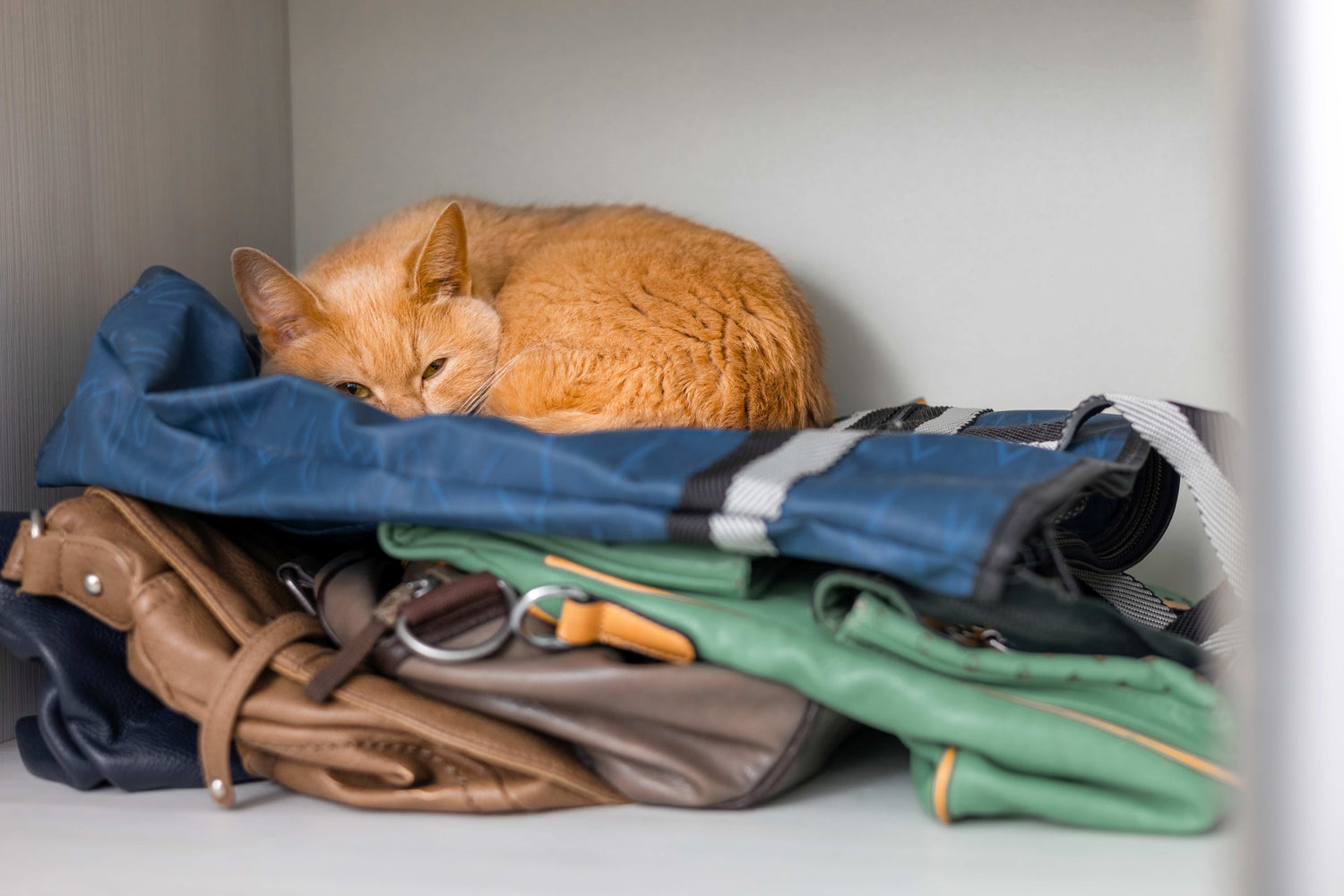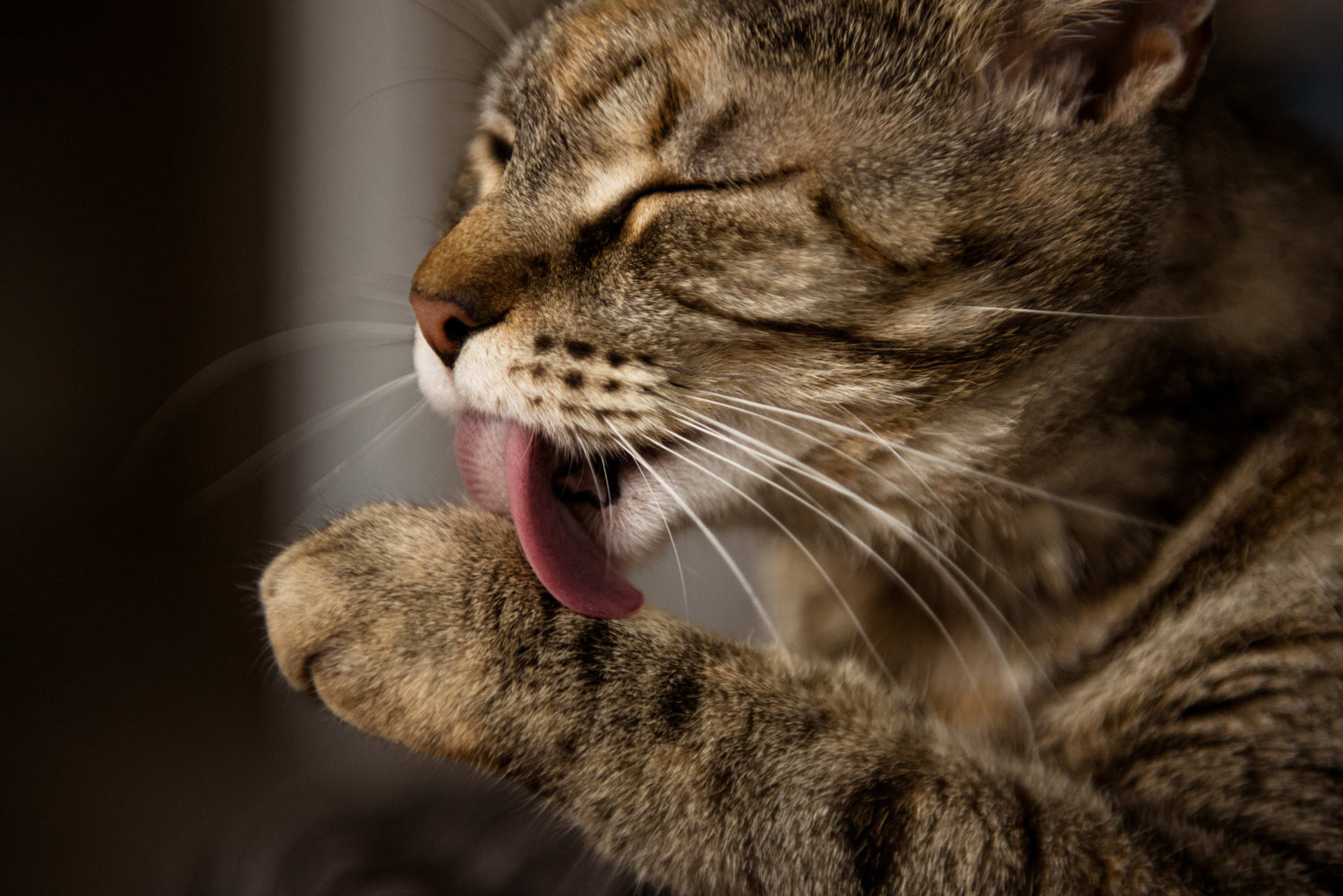Your cat drinks too little
Do you have the impression that your cat doesn't drink enough? Cats are generally quite lazy when it comes to drinking and have a low water requirement compared to other animals. Nevertheless, our house cats also need to drink enough liquid to avoid dehydration or developing serious illnesses. Find out here how much water a cat needs per day, how you can tell if your pet isn't drinking enough and how you can encourage your furry friend to drink.
How much should a cat drink per day?
Our domestic cats today are descended from steppe and desert dwellers who mainly met their fluid requirements through their prey. For this reason, our house cats also get by with a small amount of water per day. However, regular fluid intake is important for the cat's heat regulation, its organs and its ability to concentrate.
The exact water requirement varies from animal to animal and also depends on external circumstances such as extreme heat in summer. On average, cats need around 50 ml of water per kilogram of body weight. This means that a 4 kg cat should drink around 200 ml of liquid per day. Cats already cover most of this requirement through their food: Wet food, for example, consists of up to 80 percent liquid. Therefore, you should generally prefer wet food to dry food and, if you do feed dry food, make sure that your cat drinks enough.
If your cat does not drink enough and becomes dehydrated, this can lead to serious health problems.
[Drinks]
consequences of dehydration
If your cat eats mostly dry food but does not drink enough liquid, this can lead to metabolic problems such as constipation.
Since the cat urinates less due to the low fluid intake, its urinary tract is cleaned less frequently and crystals and Urinary stones can form. These are very painful and should be prevented at all costs – for example with specially developed diet food .
The increased concentration of urine in the body of the dehydrated cat also puts a strain on the kidneys. Substances that are excreted in the urine, such as uric acid or creatinine, are no longer excreted in sufficient quantities and poison the cat's body. If left untreated, this can lead to long-term overload of the kidneys and even Kidney disease can result in renal insufficiency . Pets with kidney disease absolutely need treatment from a veterinarian and can nutrient-rich special food .
In addition to long-term consequences, dehydration can also become an acute emergency. If your cat does not drink enough liquid over a long period of time, it will become increasingly dehydrated and lose valuable electrolytes. Since the symptoms of dehydration only appear at a very late stage, your animal must be treated by a veterinarian as soon as possible.
Signs that your cat is not drinking enough
It is often difficult to determine whether your cat is drinking too little, as it covers most of its needs with food and probably only takes occasional sips from the water bowl. When it comes to outdoor cats, the drinking behavior is also influenced by the fact that they also drink water from puddles, ponds or other bodies of water outside and are therefore less thirsty at home.
However, if your cat drinks too little, this will sooner or later become noticeable through physical symptoms. A good way to check whether your cat is drinking enough liquid is the so-called skin fold test. To do this, you can squeeze the skin on your cat's back between your fingers for a few seconds. In a well-cared-for cat, the skin is elastic and smooths out again within a very short time. However, if the skin fold remains for an unusually long time and only smooths out again slowly, this is a sign of dehydration. You should bear in mind, however, that the skin of old and thin animals is less elastic anyway. If you suspect dehydration, seek advice from your vet.
In addition to checking the elasticity of the skin, you should also examine your pet's gums. The gums are usually pink and moist. However, if they feel sticky and dry to the touch, this also indicates a lack of fluids. In addition, cold paws, Fatigue and listlessness, strong-smelling urine and sunken eyes are among the possible symptoms of dehydration in cats.
Encourage your cat to drink
If you notice that your cat is not drinking enough, it is always advisable to consult a veterinarian. They can determine how advanced your cat's dehydration is and whether there may already be secondary diseases or underlying conditions.
In addition, it is important to prevent fluid loss from the beginning and to encourage your lazy house cat to drink. You can do this by offering the drink and by drinking it yourself.
How should water be served to a cat?
Due to evolution, cats do not like to drink in the same place where they eat. Therefore, you should not place the cat's water bowl in the immediate vicinity of the feeding place. Since cats are very clean animals, food and drink should also be placed far away from the litter box. It can also be worthwhile to place drinking bowls in different places in the apartment - this way your furry friend is constantly reminded to drink and has the opportunity to take a sip here and there.
If your cat avoids the water bowl, it may be that it doesn't like it. For example, some animals are bothered when their whiskers touch the bowl when drinking. So try a different shape, such as a particularly flat or wide bowl. The material of the bowl can also play a role: plastic or rubber bowls may give off a strange taste or smell. Therefore, use ceramic or glass water bowls if possible and clean them regularly.
Many cats are also attracted to moving water: a drinking fountain or water feature in the home can encourage them to drink. Perhaps the splashing sound of the tap being turned on as it is poured into the bowl will also attract your cat's attention and make them thirsty - try filling up the water in front of your cat and observe their reaction.
Tastes can also vary from cat to cat: some cats only drink fresh water, so you should change the liquid frequently. Other animals only go to the bowl when the water has gone a little stale. Observe your cat's behavior, try different things and try to match their taste.
What should I give my cat to drink?
You can also make adjustments to the liquid itself to make drinking as tasty as possible for your cat. If your cat is very lazy when it comes to drinking and eats mostly dry food, you should first consider switching to wet food. This could already cover a large part of the liquid requirement. You can find out how to best change food in this guide .
When it comes to cat food, it is advisable to offer your cat several small meals throughout the day and, if necessary, supplement them with a few extra tablespoons of water. This trick works for both dry and wet food, depending on your furry friend's fluid needs, and ensures that your cat casually consumes more fluids than usual.
If you live in a region where a lot of chlorine is added to the tap water, you may want to switch to bottled water: the chlorine in the water is unpleasant for cats and may cause them to avoid drinking it.
Especially on hot summer days, when your cat should be drinking more fluids anyway, you can give it an ice cube to drink or eat. Animals often find this interesting and like to lick it. If your cat likes this, you can also spray it with a little water - the subsequent grooming will also provide it with much-needed fluids.
A very good way to encourage your cat to drink is an alternative to water. However, you should definitely not offer milk, as the four-legged friends are generally lactose intolerant and cannot tolerate classic cow's milk. Instead, you can make drinking more palatable for your sweet tooth with unsalted meat broth or tuna water. There are also drinks specially developed for cats that contain the finest pieces of meat to encourage drinking. Adequate fluid intake has a positive effect on your cat's kidneys and helps prevent urinary stones.





